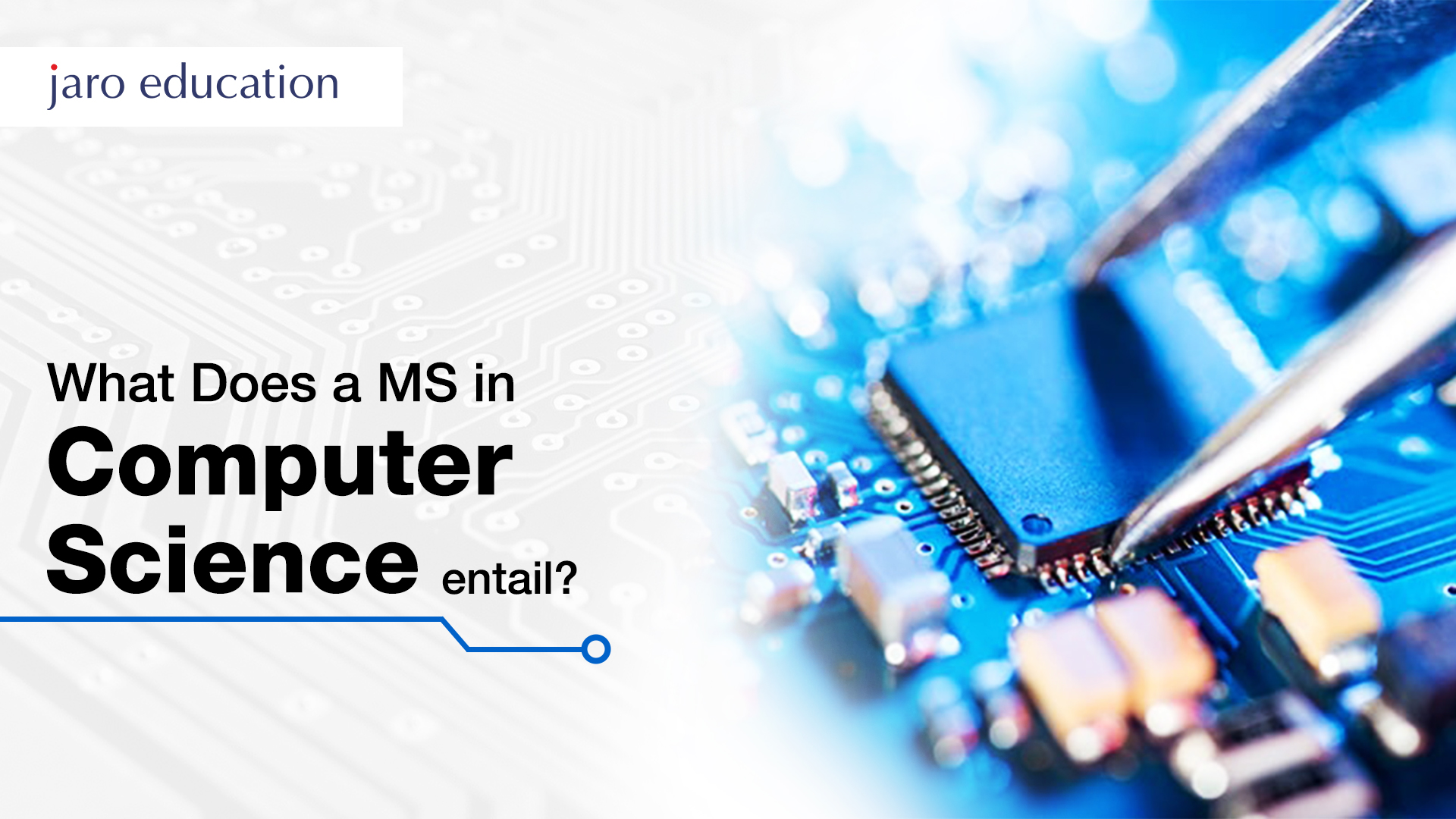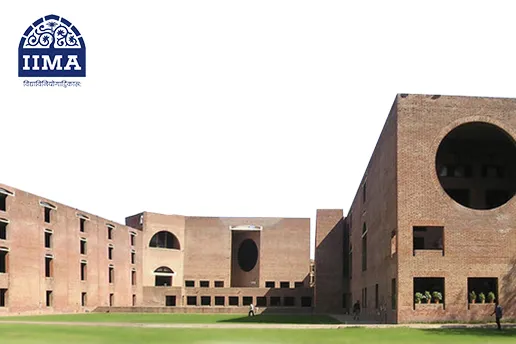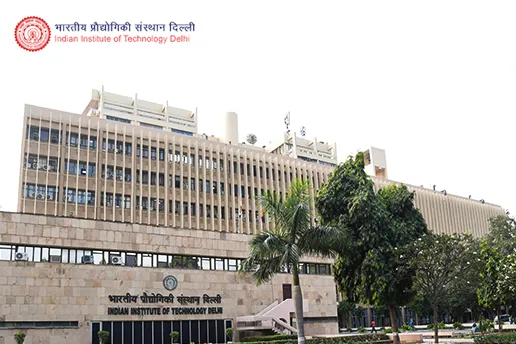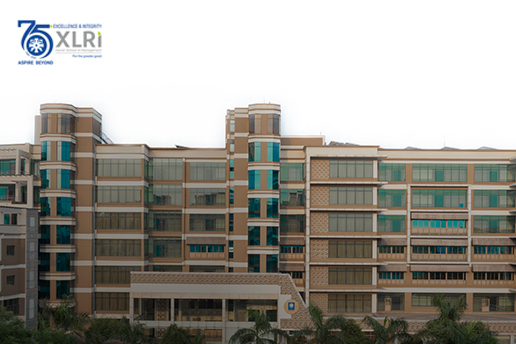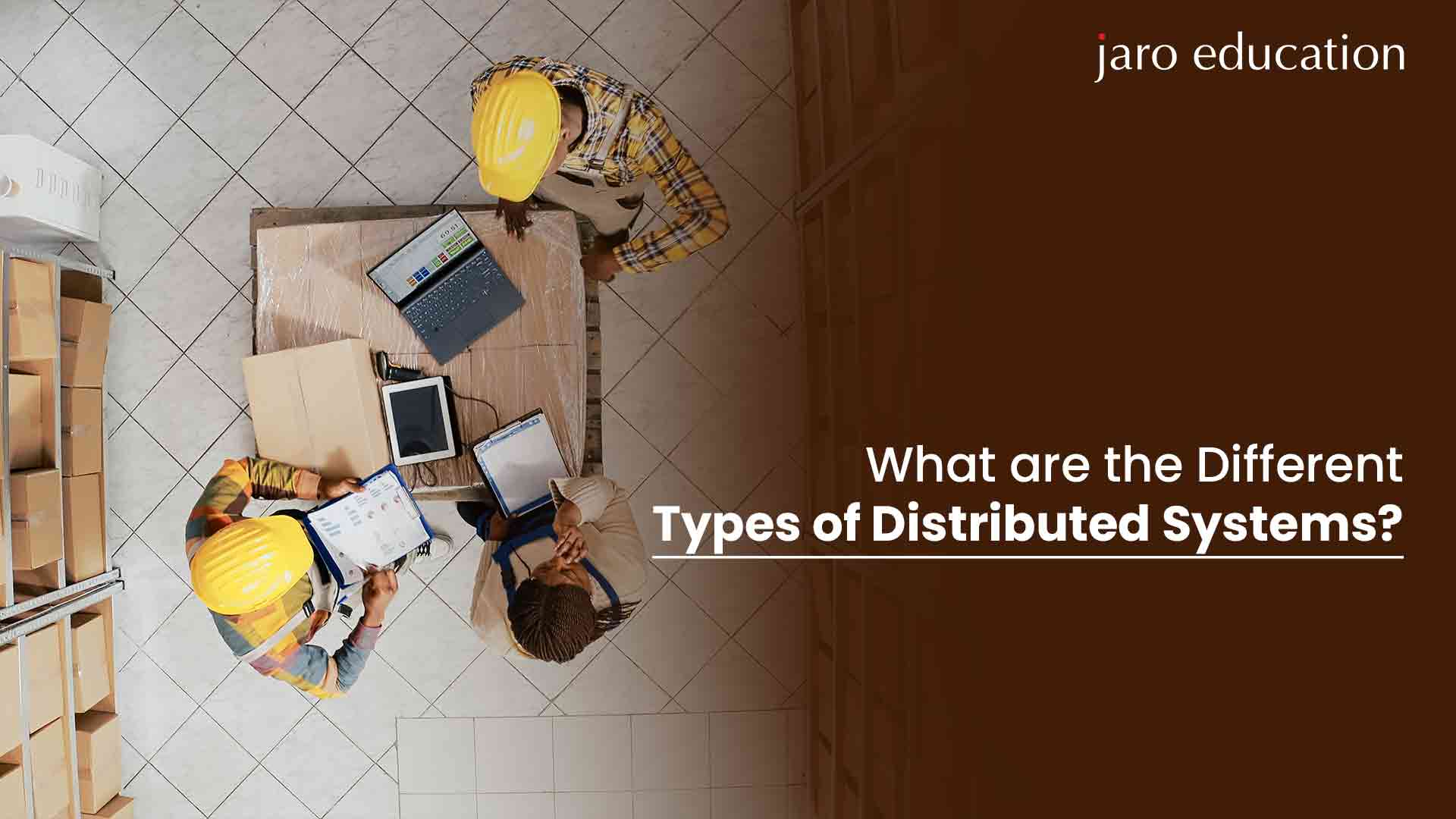
- jaro education
- 27, December 2023
- 11:00 am
Distributed systems are the next requirement for IT professionals to increase speed and efficiency, along with a synchronised workflow. It empowers them with scopes to tolerate faults with access to multiple data centres or servers.
But what exactly is a distributed system? To know what distributed systems are, it is important to understand distributed computing. It refers to software or system components spread over different computers but running as a single entity. A distributed system can be made up of several configurations like workstations, minicomputers, mainframes and computers. One of the principles of distributed computing is sharing resources like hardware, software and data. Sharing resources in organisations makes it easy to handle data concurrently through numerous processors with differing levels of concurrency and software openness. The more fault-tolerant an application, the faster it recovers from a system breakdown.
Furthermore, distributed systems help businesses scale as data volume grows. Based on the use, various types of distributed systems allow individuals to share resources for effective communication.
Table of Contents
Types of Distributed Systems
Various types of distributed systems enable resource sharing. These are as follows:
Three-tier
A three-tier system employs a distinct layer and server for each program function. The client’s data is saved in the middle tier rather than being sorted into the client system or on their server, allowing for easy development. It has three layers: data, application and presentation. This is typically found on the web or online applications.
Client-Server Systems
The simplest fundamental communication mechanism is the client-server system, in which the client gives input to the server and the server responds with output. When a client asks for resources or a task, the server allocates the resource or conducts the job and returns the outcome in the form of a response to the client’s request. Several servers can be used with the Client Server System.
Middleware
Middleware is a program that sits between two other apps and delivers services to both. It serves as a foundation for many interoperability apps that operate on various operating systems. Using this service, you can move data from one person to another.
N-tier
A Multitier distributed system is another name for an N-tier system. The network may include a variety of functions in the N-tier system. This system stems have structures comparable to a three-tier design. Interoperability occurs when one application requests another to execute a job or deliver a service. N-tier architecture is widely used in online applications and data systems.
Peer-to-Peer Systems
A peer-to-peer system is a decentralised model in which the system functions as both a client and a server. Nodes are critical components of a system. Each node in this system does its duty on its local memory and communicates data over the supporting medium; this node can function as a server or client for the system. Peer-to-peer systems allow programs to communicate at the same level without regard for hierarchy.
In recent times, peer-to-peer systems have three sections.
Hybrid peer-to-peer
Some nodes in a hybrid P2P have distinct functions assigned to them in an organised fashion.
Structured peer-to-peer
Structured P2P nodes adhere to a prescribed distributed data structure.
Unstructured peer-to-peer
Unstructured P2P nodes choose their neighbours at random.
Key Components of Distributed Systems
The essential components of a distributed system are the database, the primary system controller, the system data store, the secondary controller, and the user interface client. Optional components in a non-clustered system include user interfaces and supplementary controllers.
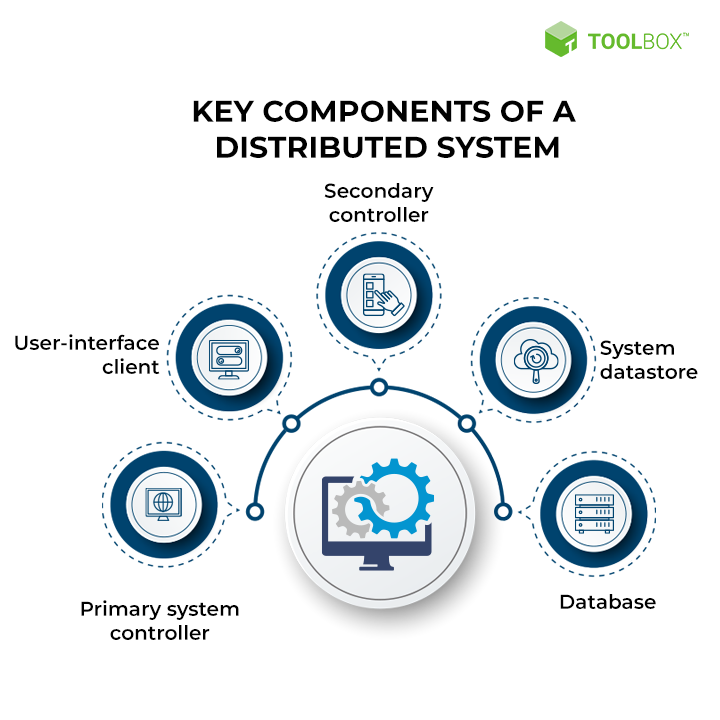
*spiceworks.com
Database
A relational database holds all data in a distributed system. When the data storage locates the data, it distributes it to numerous consumers. Relational databases are prevalent in all data systems and allow several users to access the same data simultaneously.
Primary System Controller
In a distributed system, the primary system controller is the single controller that keeps track of everything. It is also in charge of managing and dispatching server requests throughout the system. The executive and mailbox services are installed on the principal system controller automatically. Optional components in a non-clustered system include a user interface and supplementary controllers.
System Data Store
For all shared data, each system has just one data storage. Whether clustered or not, the data is typically stored in the disc vault. This can be on a single machine or dispersed over numerous devices in non-clustered systems, but all machines must have access to this data store.
Secondary Controller
A process controller or a communications controller is the secondary controller. It controls the system’s translation load and regulates the flow of server processing requests. It also regulates the system’s contact with VANs or trade partners.
User Interface Client
The user interface client is a system component that provides users with crucial system information. This is not a clustered environment and does not run on the same computers as the controller. It offers the functions required to monitor and control the system.
Distributed Systems: Benefits
After comprehending what distributed systems are, it is essential to know why it is beneficial for businesses and organisations. Here are some benefits of distributed systems.
Innovative
Distributed systems foster innovation in many areas like the Internet of Things (IoT) and Machine Learning.
Reduces Latency
Low latency is achieved using distributed systems. If a node is closer to the user, the distributed system ensures that traffic from that node reaches the system. As a result, the user may realise that it takes significantly less time to serve them.
Geographic Distribution
A feature of a distributed system is geographic distribution. It allows companies and organisations to provide users with services in different areas.
Offers Seamless Performance
Distributed systems can outperform centralised systems by utilising the capabilities of several computers to handle the demand.
Reliable
In terms of failures, distributed systems are significantly more dependable than single systems. Even if a single node fails, it does not affect the remaining servers. Other nodes can continue to operate normally.
Efficient
Because they contain several computers, distributed systems are designed to be efficient in every way. Each of these computers could tackle issues on their own. This is not only deemed efficient, but it also saves the user a substantial amount of time.
Secure
Distributed systems include security safeguards that prevent data breaches and illegal access to any data, hardware or software of an organisation.
Cost-effective
Distributed systems, despite their high expense of implementation, are reasonably cost-effective in the long term. In contrast to a mainframe computer, which is made up of multiple processors, a distributed system is made up of several computers working together. This infrastructure is significantly less expensive than a mainframe system.
Distributed Systems: Examples
When processing capacity is limited or when a system faces unexpected changes, distributed systems are perfect for balancing the burden. As a result, distributed systems have an infinite number of use cases ranging from electronic banking systems to multiplayer online games. Let’s look at some more explicit examples of distributed systems:
Telecommunication Networks
Peer-to-peer networks include telephone and cellphone networks. Telephone networks were the first example of distributed communication, and cellular networks are another type of distributed communication system. As distributed communication networks, they become increasingly sophisticated with the deployment of Voice over Internet Protocol (VoIP) communication systems.
Parallel Processors
Specific tasks are distributed across numerous processors in parallel computing. This, in turn, generates components that may be assembled to make a large computing work. Previously, parallel computing was limited to numerous threads or processes accessing the same data and memory. Operating systems, as they grew more common, also fell into the realm of parallel processing.
Networks
Ethernet and LAN (Local Area Network) were invented in 1970. The LAN allows computers to connect in the same area. Thanks to the development of peer-to-peer systems, the internet and e-mail continue to be the two most significant examples of distributed systems.
Distributed Database Systems
A distributed database is dispersed across several servers or locations. One can copy the data on many systems. The nature of a distributed database system might be either homogeneous or heterogeneous. All systems in a homogenous distributed database utilise the same database management system and data model.
Real-time systems
Real-time systems are not restricted to a single industry. These systems may be found in logistics, massively multiplayer online games (MMOGs), financial trading, ride-sharing, e-commerce, and airline industries worldwide. The emphasis in these types of systems is on information exchange and processing, with the requirement to communicate data quickly to an extensive range of users who have demonstrated an interest in such material.
Final Thoughts
Distributed systems, because of their capacity to provide scalability and enhanced performance, are the most significant enablers of current computer systems. Wireless networks, cloud computing, and the internet all rely on distributed systems. Distributed systems, since they may draw on the resources of other devices and processes, provide some capabilities that would be difficult or impossible to design on a single system and have become extremely dependable by combining the power of several computers.
Since most organisations heavily rely on distributed computing, they require professionals to carry out the process. However, one can achieve it only through proper skills and knowledge. For that reason, Manipal University is offering an online course on Masters of Computer Applications. This course allows professionals to gain an in-depth understanding of cloud computing and its infrastructure. The program also enables individuals to learn about big data, application development, and machine learning.



